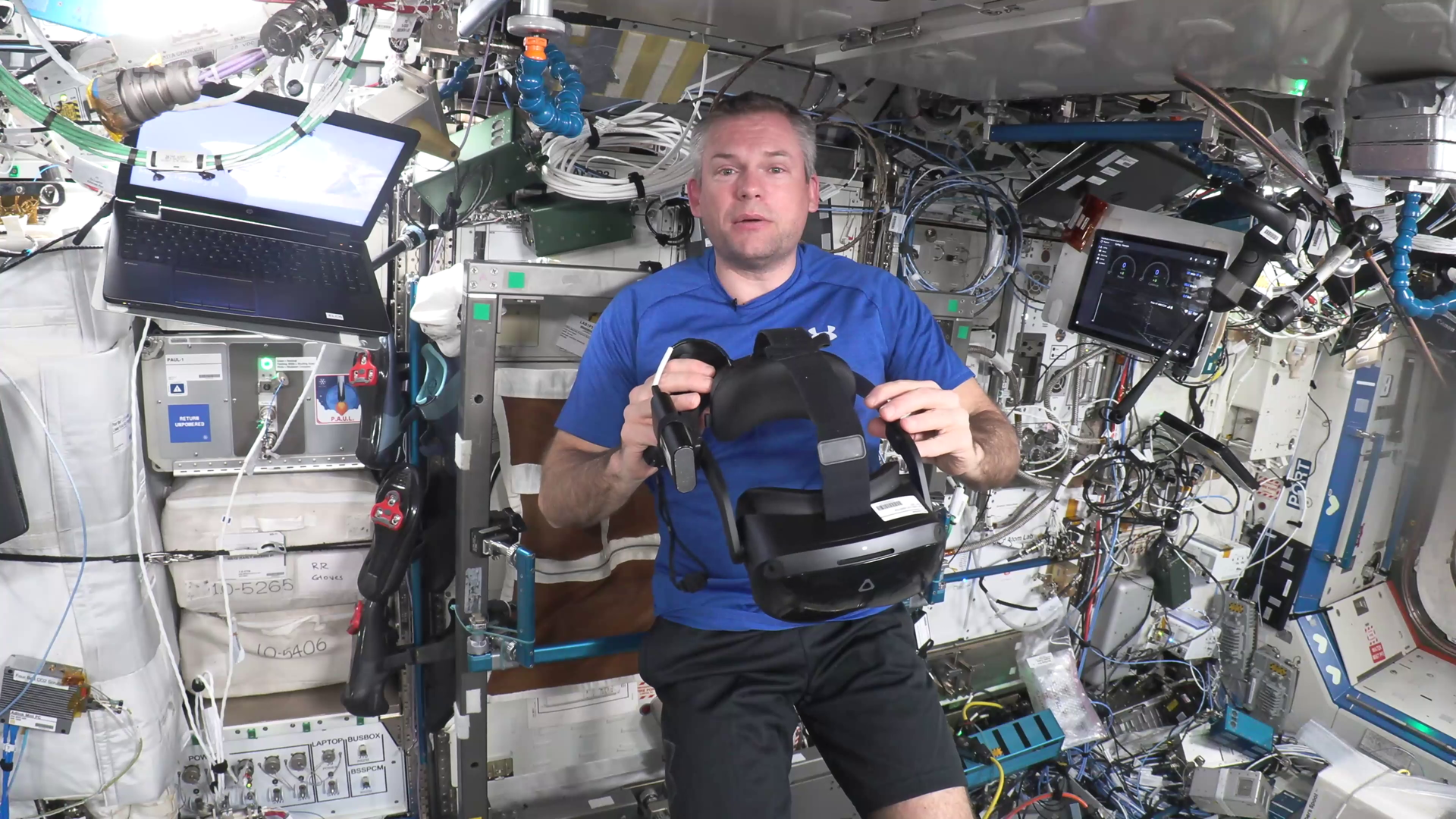Andreas's space for Earth
Andreas Mogensen’s Huginn mission had a number of experiments about space for Earth, which were designed to investigate technologies that could one day benefit us on Earth.
Exercising with virtual reality


Access the video
One of Andreas’s favourite experiments on his Huginn mission was VR for Exercise, during which he wore a virtual reality headset while biking on the FERGO exercise bike. The bike would adjust the load for Andreas as he biked up and down hills, making it harder and easier to pedal.
“This was perhaps the best surprise of all of our experiments on Andreas’s mission,” says Thomas E. Andersen, CEO of Danish Aerospace Company (DAC).
“Besides Andreas saying he really enjoyed it, we had good feedback from some of his crewmates, including Marcus Wandt. The videos from Svaneke Bakker and mountain biking in Silkeborg in Denmark were some of the favourite tracks,” adds Thomas.
Looking into the future, Thomas and DAC hopes that the VR headset can be used on future space missions as well as helping people on Earth who might feel isolated.
Metal 3D printing

With 3D printing in space using metal, astronauts would be able to print a tool or a spare part in orbit instead of having it delivered from Earth. In January 2024, the NG-20 cargo vehicle shipped the first Metal 3D printer to the International Space Station.
The printer was built by a consortium led by Airbus Defence and Space under contract with ESA. “The printer is now installed in the Columbus module, and we plan to start printing in May 2024. We are looking forward to getting the prints down and analysing them, to see how they compare to the prints we have made here on Earth,” says Rob Postema, ESA technical Officer.
Four different objects are in the pipeline to be printed. It will take between a few weeks to a month to build each object from scratch. The items will be transported down to Earth and could be in the hands of scientists by the end of the year.
A distant goal of metal 3D printing is recycling old satellites and other metal structures in space, which would help the issue of overcrowding in low Earth orbit while also providing material for the 3D printer. This experiment on the Space Station is a first step that opens the journey towards more sustainable space exploration.
Cooking in space

In space most food is rehydrated, warmed up, or comes in cans which might not be the most appetising for astronauts spending many months in space.
Can making your own food help with motivation for both astronauts and others who might lack the access to cooking? Food Processor, led by the French space agency CNES, together with the French User Support Centre CADMOS, had Andreas make a chocolate mousse using a specially designed whisk.
“We realised that the mixing of molecules with the air occurs quicker in space than on Earth and in general, the volume of the egg whites was bigger than on Earth,” says Alain Maillet, science executive officer at CADMOS.
Besides supporting astronauts in space, the experiment could help elderly people or people with reduced mobility on Earth to cook and be motivated to get into the kitchen. Alain explains that they are also working in making a complete system that could automatically collect the ingredients, cook them and serve the food.
You can read more about the science of the Huginn mission on the Huginn webpage.














 Germany
Germany
 Austria
Austria
 Belgium
Belgium
 Denmark
Denmark
 Spain
Spain
 Estonia
Estonia
 Finland
Finland
 France
France
 Greece
Greece
 Hungary
Hungary
 Ireland
Ireland
 Italy
Italy
 Luxembourg
Luxembourg
 Norway
Norway
 The Netherlands
The Netherlands
 Poland
Poland
 Portugal
Portugal
 Czechia
Czechia
 Romania
Romania
 United Kingdom
United Kingdom
 Slovenia
Slovenia
 Sweden
Sweden
 Switzerland
Switzerland

























